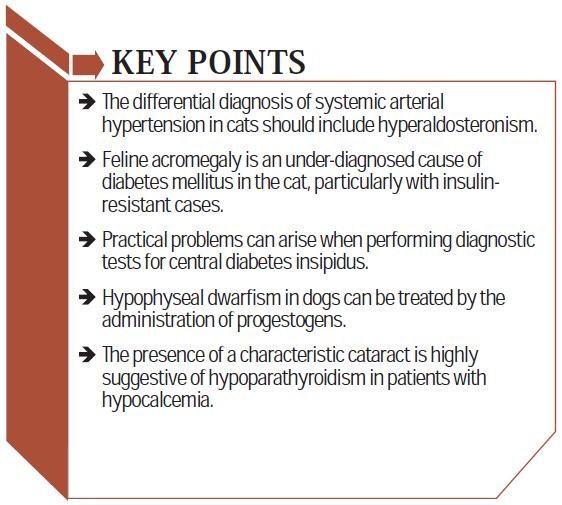
It can result from an injury or a flaw in the brains hypothalamus which controls thirst. It affects water metabolism and prevents the.

Without treatment dehydration leads to stupor coma and.
Can puppies have diabetes insipidus. Diabetes insipidus DI is rare in dogs and is characterized by excessive thirstdrinking and the production of enormous volumes of extremely dilute urine. Some dogs may produce so much urine that they become incontinent incapable of controlling their urine outflow. Symptoms of Diabetes Insipidus in Dogs Excessive urination polyuria Excessive drinking polydipsia It may appear that your dog has incontinence problems however it is probably the excessive urination he is.
Weight loss Failure to thrive. Diabetes insipidus DI is a disorder of water balance. Insipid means tasteless – referring to the dilute urine.
Is rare in both dogs and cats. The condition is usually permanent and the prognosis is good. Without treatment dehydration leads to stupor coma and.
While diabetes mellitus is by far the most common type of diabetes to affect dogs diabetes insipidus can also affect dogs too although at a lower rate of occurrence. Diabetes insipidus is not insulin-related and is a very different disease to diabetes mellitus despite the fact that they share similar names. Diabetes insipidus in dogs is a rare disease that causes severe thirst and extreme urination.
Dogs with this condition have extremely diluted urine. This can be caused by one of two things. Central Diabetes Insipidus or Nephrogenic Diabetes Insipidus.
Diabetes insipidus is a rare disorder in dogs and cats is a result of ADH deficiency and may be secondary to brain trauma. Diagnosis of central diabetes insipidus may be achieved through the use of a water deprivation test or by showing an increase in urine osmolality after ADH supplementation. Diabetes insipidus is a rare disease that affects young dogs that are less than a year old.
The condition causes a dogs body to become unable to concentrate urine so the dog has a hard time. Canine Diabetes Insipidus There are two types of canine diabetes insipidus. Central diabetes insipidus is caused by decreased production of the antidiuretic hormone ADH by the pituitary gland.
This hormone also known as vasopressin regulates the kidneys ability to absorb water and deficiency of the hormone causes water imbalance in the body. Diabetes Insipidus is one of two types of diabetes that can affect dogs and cats the other being Diabetes Mellitus. Diabetes Insipidus also known as watery diabetes or weak diabetes is the more rare of the two types and it can only be diagnosed.
Having a doctor say that the diagnosis is diabetes insipidus DI can be a scary experience. When the word diabetes is heard many people think of insulin shots finger pokes for blood tests and a life of avoiding sugary products that will spike their blood sugar. None of that exists with diabetes insipidus.
Pets can develop diabetes insipidus if their body doesnt produce or respond to the antidiuretic hormone ADH or vasopressin which is the one responsible for helping the kidneys regulate the amount of water inside the body. Canine diabetes insipidus is an uncommon disease characterized by the lack of ability to preserve water. The typical signs of diabetes insipidus in dogs include polyuria polydipsia weight loss dull coat and dehydration amongst others.
Read through to get a detailed account of the symptoms and treatment of this disease condition in dogs. Diabetes insipidus and diabetes mellitus are two different types of diabetes in dogs and both can be serious if left untreated. Diabetes insipidus is also known as water diabetes and is the more rare form.
It affects water metabolism and prevents the. Birth defect exposure to drugs metabolic disorders or renal failure can cause nephrogenic diabetes insipidus. Both types will result in the following symptoms in dogs.
Researchers have not found a good treatment for this condition. It can result from an injury or a flaw in the brains hypothalamus which controls thirst. Diabetes insipidus DI is a metabolic disorder in which dogs demonstrate a severe overproduction of urine.
The most common form of DI is called central DI and is due to insufficient production of anti-diuretic hormone ADH a hormone responsible for concentrating the urine into a small volume. Dogs with DI urinate and drink excessively.